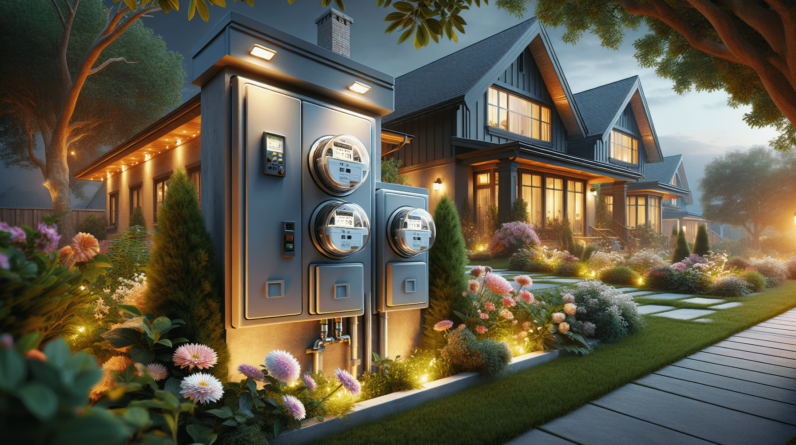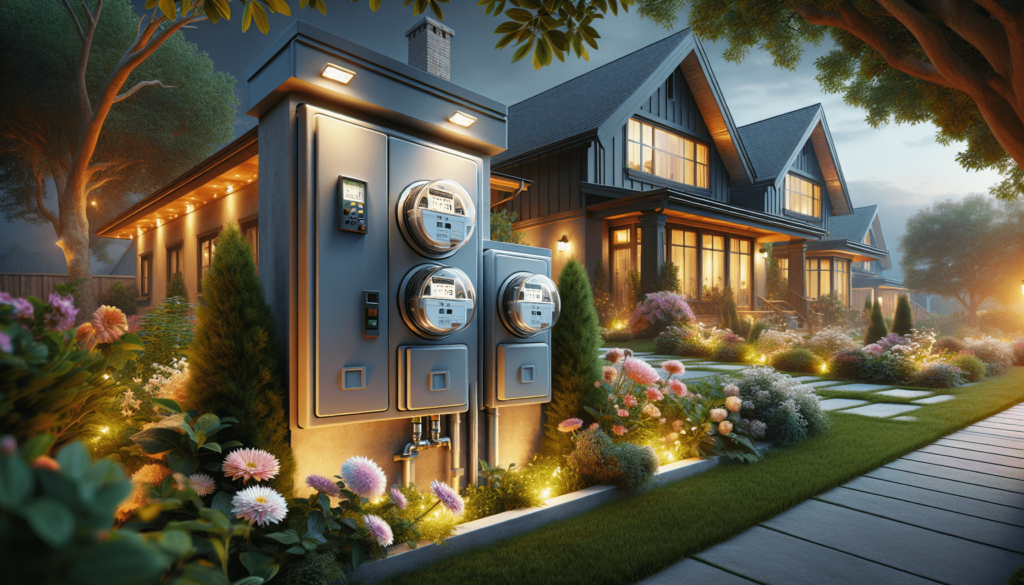

Have you ever stopped to consider how much energy your home consumes on a daily basis? Understanding your electrical meter can provide you with invaluable insight into your energy usage, costs, and how to manage your electricity consumption more efficiently.
What is an Electrical Meter?
An electrical meter is a device that measures the amount of electrical energy your home uses over time. You’ll typically find it mounted on an exterior wall, often near where the electrical service enters your home. This crucial instrument not only tracks your energy use but is also used by utility companies to bill you for the electricity consumed.
Types of Electrical Meters
There are several types of electrical meters, each with its own features. Knowing the type you have can help you understand how to read and manage it. Here are the most common meters you might encounter:
-
Analog Meters: These traditional meters have a series of dials. To read them, you need to calculate the current reading by looking at each dial from left to right. Sometimes, this can be a bit tricky, especially with the rightmost dial often turning counterclockwise.
-
Digital Meters: This modern variant displays your energy consumption in plain numbers, making it easy to read. Simply glance at the display to see your current electricity usage. Some digital meters can communicate with your utility provider remotely.
-
Smart Meters: These are the high-tech versions of electrical meters. Apart from measuring your energy consumption, smart meters provide real-time data and can even be monitored via an app. They may also offer insights into your energy usage patterns, helping you identify areas for improvement.
Why is Your Electrical Meter Important?
The electrical meter is not just a mundane piece of equipment; it plays a vital role in your daily life. Understanding its function can pave the way for informed decisions about your energy consumption and spending.
-
Tracking Energy Usage: By checking your meter regularly, you can gain insights into your energy habits. This can help you determine when you use the most electricity.
-
Budgeting: Knowing how much energy you consume can help you budget effectively. With a clearer picture of your usage, you can plan your finances better and explore ways to save.
-
Detecting Issues: If you notice sudden spikes in your readings, it could indicate electrical problems or inefficiencies in your home systems. Early detection can potentially save you money on repairs and high bills.
How to Read Your Electrical Meter
Reading your electrical meter might seem overwhelming at first, but once you understand how to do it, you can become more aware of your energy consumption.
Reading an Analog Meter
If you have an analog meter, you will see a series of dials. Here’s a simple step-by-step approach to reading one:
-
Identify the Dials: Start with the leftmost dial and work your way to the right. Each dial represents a digit in your total electricity consumption.
-
Note the Number: Read the number shown on each dial. If the pointer is between two numbers, record the lower number. Be cautious with the dial that turns counterclockwise—it can be a bit tricky!
-
Complete the Reading: Write down the numbers sequentially from left to right. For example, if the leftmost dial reads 3, the next 5, and the last 7, your overall reading is 357.
Reading a Digital Meter
Digital meters are much easier to read. To check your usage:
-
Locate the Display: Simply glance at the screen to see a series of numbers, which represent your current usage.
-
Record the Reading: Note down the numbers displayed; they represent your kilowatt-hours (kWh) used.
-
Watch for Additional Information: Some digital meters display additional information like peak usage times or current voltage levels. Familiarizing yourself with these readings can give you further insights.
What Do Your Readings Mean?
Understanding how to interpret your readings will help you make sense of your overall energy consumption.
-
Energy Consumption: Your meter readings, measured in kilowatt-hours (kWh), indicate how much electricity your household is using. By comparing your monthly readings, you can see trends in your usage.
-
Peak Usage: Some meters will show peak usage times as well. Knowing when you use the most electricity can help you adjust your habits to save money.
-
Billing Cycles: Utility companies often bill based on monthly consumption. Knowing how to read your meter allows you to anticipate your bill before it arrives, making budgeting easier.

Understanding Your Utility Bill
Once you have a grasp on how to read your electrical meter, the next logical step is to understand your utility bill.
Items on Your Bill
Your electricity bill typically contains several components that you should be aware of:
-
Basic Service Charge: This is a flat fee charged by your utility company to cover the cost of delivering electricity to your home.
-
Energy Charges: This is calculated based on your electricity usage, generally expressed in cents per kWh consumed.
-
Taxes and Fees: Other charges may include taxes and fees imposed by local or state authorities.
How to Calculate Your Monthly Usage
To get a more accurate idea of your costs, you can calculate your estimated bill based on your meter readings. Here’s a simple formula you can apply:
-
Record the Previous and Current Month’s Reading:
Month Meter Reading Usage (kWh) Previous 3000 – Current 3200 200 -
Calculate Usage:
[ \text = \text – \text ]
-
Estimate Bill: Multiply your usage by your utility’s rate (for example, if your rate is $0.12 per kWh):
[ \text = \text \times \text ] [ = 200 , \text \times 0.12 , \text = 24 , \text ]
Monitoring and Reducing Energy Consumption
Understanding your electrical meter and how to read it is just the beginning. The real goal is to use that information to monitor and reduce your energy consumption.
Tips for Reducing Electricity Usage
-
Switch to Energy-Efficient Bulbs: Using LED bulbs can significantly reduce your electricity consumption and last longer than traditional bulbs.
-
Unplug Devices When Not in Use: Powering down electronics instead of leaving them plugged in can save energy. Consider using a power strip to turn multiple devices off at once.
-
Utilize Smart Technology: Smart thermostats and programmable devices can optimize your heating and cooling, reducing energy use when you’re not home.
-
Regular Maintenance: Keep your appliances in good condition. Regularly check filters, ducts, and seals to ensure efficient operation.
-
Monitor Usage During Peak Hours: If your utility company offers time-of-use billing, try to shift heavy usage to off-peak times when energy is cheaper.
Using Smart Meters to Your Advantage
If you have a smart meter, you have access to even more information about your energy consumption. Here’s how to make the most of it:
-
Real-Time Monitoring: Many smart meters come with an app that allows you to track your energy use in real-time, enabling you to make immediate changes to usages, such as reducing the use of energy-hungry devices.
-
Set Energy Goals: Most smart apps help you set goals based on past consumption trends. Use this feature to challenge yourself to lower your monthly usage.
-
Receive Alerts: Some devices can notify you when you are about to exceed your set energy usage, prompting you to take action and adjust accordingly.

Common Issues with Electrical Meters
Just like any other piece of technology, electrical meters can sometimes encounter issues. Being aware of potential problems can help you address them swiftly.
Inaccurate Readings
If your meter seems to be reading higher than expected, it might be due to:
-
Obstructions: Ensure that the meter is clean and unobstructed. Dust or debris can affect readings, especially on analog versions.
-
Faulty Meter: In rare cases, meters can malfunction. If uncertain, reach out to your utility provider to discuss any discrepancies.
High Bills
Unexpectedly high utility bills can indicate various issues:
-
Increased Consumption: Review your usage and identify any new appliances or activities that may have increased your consumption.
-
Leakages or Failures: Older homes may have wiring issues or leaks, causing excessive energy loss. Consider consulting a professional if you suspect this is the case.
Conclusion
Understanding your electrical meter is much more than being able to read the numbers. It’s about gaining insight into your energy consumption, managing your finances better, and even contributing to environmental sustainability through mindful energy usage.

So the next time you glance at your electric meter, remember that it’s a gateway into understanding your home’s electricity consumption. With this knowledge, you’re equipped to make informed choices about your energy use, stay on top of your bills, and maybe even find more ways to save money. By implementing some of the strategies discussed, not only will you lighten your utility bill, but you can also live in a more energy-efficient home. Now that you’ve become skilled in these concepts, you can also discuss these insights with friends and family, helping them make changes in their homes, too!






